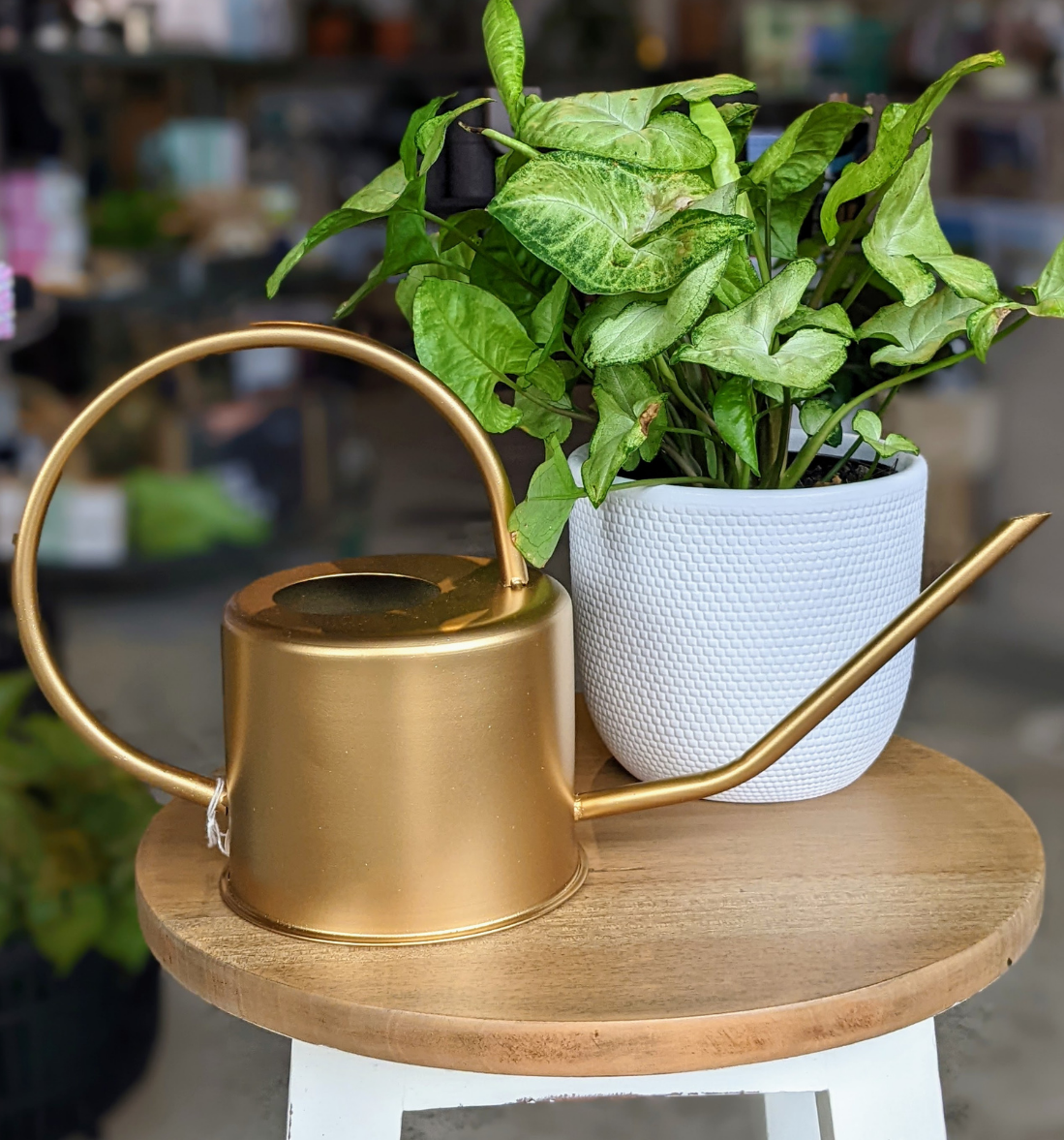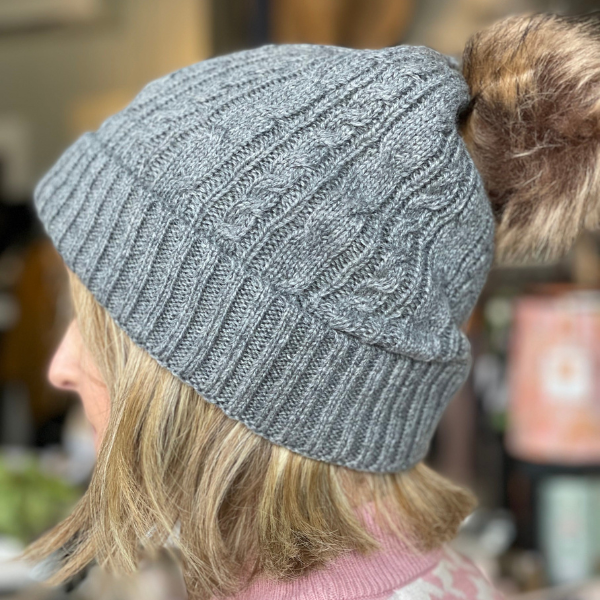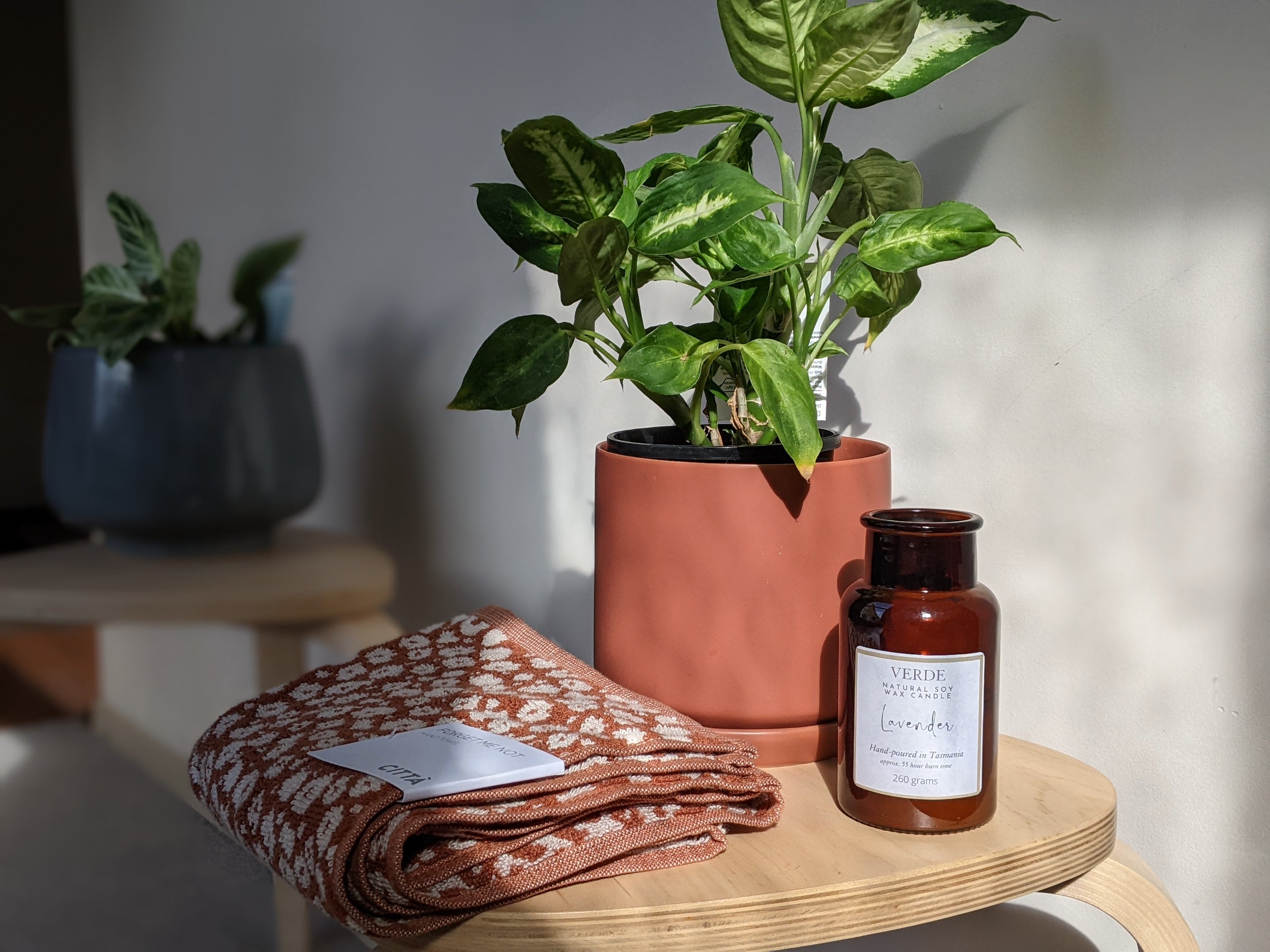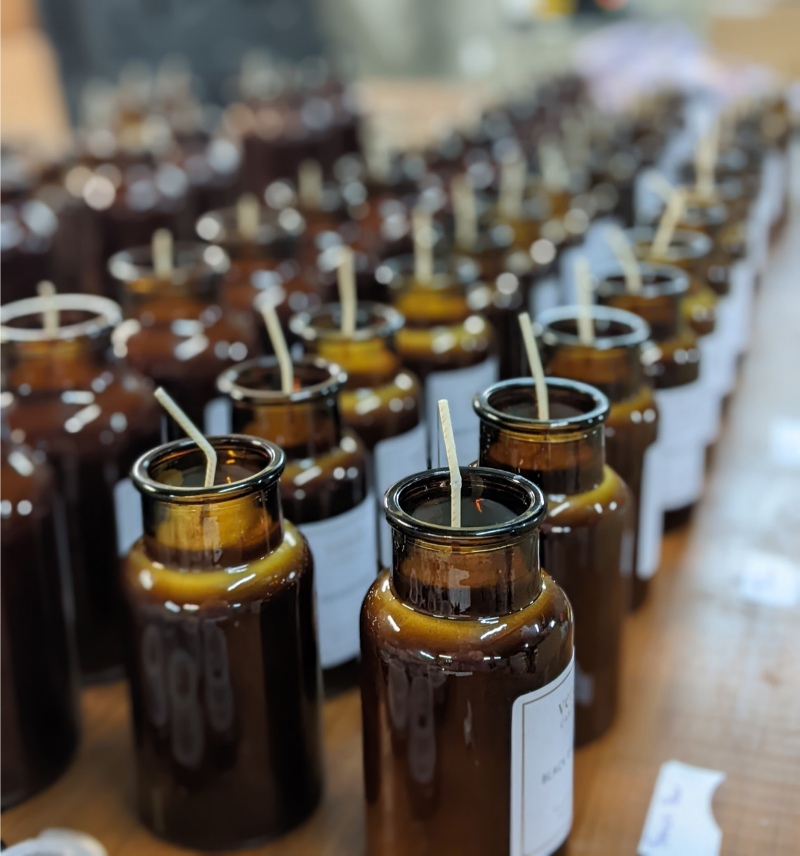
Looking After Your Winter Woollens
It looks like winter has arrived! With the snow hitting the mountain, the Bridgewater Jerry loitering over the river, and the arrival of increasingly chilly mornings, Hobart has officially made the transition. With the return of cold weather, we've been making the changeover to our winter wardrobes, which tend to have a few favourite items of warm woollen knits and coats.
Wool is such an excellent investment, and in a place like Tasmania, a very necessary one! I discovered early on when I first moved here - over 30 years ago now - that woollen layers are an everyday essential through winter. So, each year we find a beautiful collection of jumpers, beanies and scarves to bring instore, ranging from 100% pure wool to lower percentage wool blends for softness, durability and affordability.
Because wool is such an investment, and you tend to fall in love with your favourite jumpers and scarves, it's great to be able to keep your woollens in their best condition so they can last you many years. Read on for a full run-down on how best to care for woollen items.

Wool is truly a super-fabric. Lightweight, versatile, and sustainable, it's well worth the investment each year.
Since wool is a natural fibre, most often coming from sheeps' wool, it contains no synthetics or plastics and is fully biodegrable. It requires far less water to produce woollen clothes compared to cottons and polyesters, and since wool doesn't need to be washed as often as other fibres, woollen clothes use less water during their wearable lifetime, too. Plus, with proper care, wool can last for years - even decades!
Wool has a natural breathability that helps to keep you feeling comfortable and prevents clamminess. It's especially perfect for a cool and humid environment like Tasmania's, since wool naturally wicks moisture, keeping you dry and warm. Woollen fibres can absorb up to 30% of their weight in moisture before you start feeling damp! I can attest that in cooler climates the best and easiest way to stay warm is to wear wool!
We love supporting local producers, so we source our woollens from Australian growers, makers and designers whenever possible - occasionally some of our wool comes from New Zealand, too. Wool is the ultimate all-rounder: renewable, sustainable, comfy to wear, and suitable for almost all weather types. Ticks all our boxes so you can't really go wrong!

The first thing to know about woollen fabrics are the different types of weaves and knits they can come in.
Woollen fabric types are split into four categories: worsted-spun woven and knitted, and woollen-spun woven and knitted.
Worsted-spun fibres tend to be very fine, and are generally used for luxury items like woollen suits (in the case of the woven type) or lightweight next-to-skin garments like t-shirts, thermals, leggings and dresses (in the case of the knitted type).
On the other hand, woollen-spun fibres are bulkier, and are used for more heavy-duty items like windproof winter jackets and coats (woven) and cosy, chunky jumpers, socks, beanies and scarves (knitted).
The type of fibre used to make your garments determines the best ways to wash and store them, since different types of woollen fibres behave in different ways.

The first and best thing to do when washing woollens is always to check the tag for care instructions. Some woollen garments need to be washed by hand in cool to warm water with a gentle wool wash - just make sure you don't use any fabric softeners. Fabric softeners can encourage wool to pill, and coat the fibres in a residue which negatively affects wool's characteristic ability to breathe and regulate moisture and temperature.
Most washing machines do have a wool/delicate cycle option that you can use for your woollens, which I often use as it is much easier than handwashing. I also know my washing machine well and understand just what it will do when I wash woollens in it.
A machine wash works best for finer woollens, like thermals and fine knit jumpers, but anything that says it is machine washable on the tag can be popped into to the washer - just double check the recommended wash temperature and cycle.
I always make sure to use a delicates wash bag or pillow slip to wash woollen items in, with jumpers turned inside out. And of course, darks and lights are separated!
Often the labels say lay flat to dry and this works really well with heavy and chunky knit jumpers, but my finer jumpers that have been spun gently and have minimum water in them I find work fine over a clotheshorse in a warm spot. The most important thing when drying wool is to ensure you aren't stretching or distorting the fabric, as this will alter the fit and shape of the garment once it's dry.
As a side note, the stretching and shaping of woollen garments while wet can be a useful tool for reshaping clothes that have been stretched or shrunk in the wash, and is often used by knitters when creating clothes! The technique is commonly called "blocking" - you can read more about what it is and how to do it here.

One of the great things about wool is that it doesn't need to be washed as often as other fabrics like cottons and polyesters. Sometimes our woollens may not need a wash, but can still need an good airing out, especially if they've been in the cupboard for a while over the summer months.
Airing works best outside in the fresh air and sunshine, but if the weather isn't behaving for you, airing inside works too - it's just not quite as effective. Knitted garments are best laid out flat on a towel, while woven ones are best on hangers. Leave them airing for an hour or two, and if you're airing them inside somewhere try to avoid making any strong smelling foods during that time!
Woollen garments will always fare better when they're stored properly - which is of course true for most things! When storing your woollents, make sure they've been washed and fully dried before putting them away (though if you're wearing them regularly they can still go away between washes as long as they don't have any noticeable odours or stains).
As to how you should store them, this is where knowing the type of fabric comes in handy. For anything knitted, like jumpers, beanies, scarves, socks, and thermals, it's best to fold them and put them away in a drawer or cupboard to avoid stretching them on hangers. Woven fabrics on the other hand should be hung up - this is your coats, jackets, and suits. And of course, popping in a lavender bag or other clothes sachet helps keep insects away and your clothes smelling lovely!

Pilling is a bothersome reality of owning woollen garments. Pilling (sometimes known as "bobbling") is the formation of fuzzy balls on the surface of woollen clothing, and often results in an unsightly or worn out appearance. It's a normal occurrence for wool and doesn't necessarily indicate that there is a fault with the garment - all woollen garments will get some pilling.
Pilling happens with woollen garments more than it does with cotton or synthetics, and usually appears where the most wear occurs, like under the arms, on the side seams, where a hand bag sits or where the fabric rubs against furniture. Thankfully, there are some things you can do to help prevent pilling from happening, and to deal with it when it does.
Prevention
While you can't prevent pilling entirely, there are a few things you can do to help minimise it and prolong the life of your woollens.
1. Make sure your woollens are turned inside out when washing, to prevent friction on the outer surface of the garment
2. Avoid fabric softeners - I already put this in the washing section, but I'll pop it in again. Not only do fabric softeners encourage pilling, they also coat the fibres of the clothes and prevent wool from doing its job!
3. Try to minimise abrasion as much as possible when wearing your woollens. There's only so much you can do to avoid friction on your clothes, but doing small things like wearing less abrasive jewellery and bags or avoiding rough surfaces can make a big difference.
Removing Pilling
Even with a lot of care taken to try and prevent pilling, your woollens are always going to pill a little bit - it's just part of wearing them! So when it does appear, here are three ways to get rid of it, and get your woollens looking as good as new:
1. If not too many pills have formed, then they can easily be removed by hand. The best time to do this is routinely after drying, or just prior to giving woollens an iron.
2. A fine comb or pilling comb can be used to remove pills, but this should be done very gently and carefully. We find the simplest ones from the supermarket, used with care, are the best.
3. If you have a lot of pilling to deal with, small battery operated pill and lint removal devices known as either “de-pillers” or “fabric shavers” are a great option. They tend to be fairly low cost and are very effective at removing pills, giving your clothing an as-new appearance again without quite as much effort as removal by hand. Take your time and take care as you go. It is better to remove the pills little by little and with care.
(top tip: try to de-pill regularly, and don't let it build up - it's much easier then!)
With proper care, woollen garments can last years - even a lifetime! They're well worth taking care of, especially down here in chilly Tasmania. If you're in need of a few warming goodies to carry you through the colder weather, you can have a look at our winter collection here, or pop instore, say hi and have a browse. We hope you can enjoy those chilly, snowy mornings we have coming our way snuggled up in wool - pill free!





Leave a comment
This site is protected by hCaptcha and the hCaptcha Privacy Policy and Terms of Service apply.